Without bold political vision and proper investment, too many older adults find themselves without the care, services and support they need. It’s time to face this reality head on and break the silence so we can build a society where growing old with dignity is the rule, not the exception.
THE REALITY OF SENIORS’ RESIDENCES

Waiting far too long…
In Québec, thousands of seniors are waiting for a place in a residence that meets their needs. Wait times can be up to two years, depending on the type of residence.
Meanwhile, older adults remain in environments that no longer meet their health needs. They gradually lose their independence, experience more falls and complications, and end up in the hospital more often.
Every delay jeopardizes their quality of life. Their loved ones worry constantly, caught between exhaustion and helplessness. Many of them have to shoulder the burden of demanding home care alone, without the support they need.
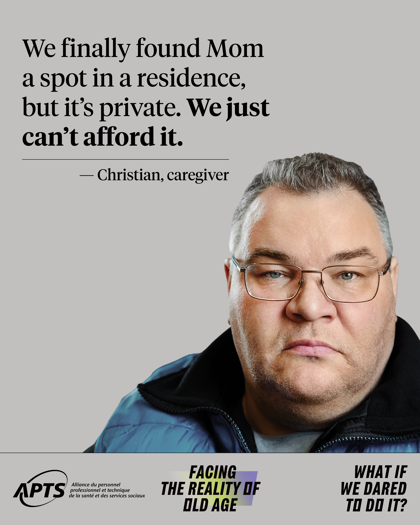
Making room for the private sector… but at what cost?
To save money, the government is banking on private seniors’ residences. But these residences are out of reach for many.
A 3½ apartment costs an average of $1,900 in remote regions and $2,200 per month in urban centres.
Add in essential services – meals, bathing assistance, housekeeping and medication support – and the bill skyrockets: nearly $3,900 a month in the regions and easily $4,000 in major centres.
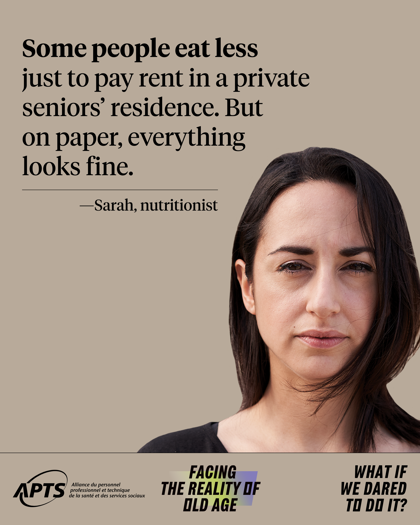
Few families can absorb that sort of expense without going into debt or cutting back on essentials.
For many, it means dipping into savings accumulated over a lifetime or asking for financial help from their children, who themselves are dealing with the rising cost of living.
Behind the numbers are loved ones burning out and seniors who are afraid of becoming a burden.
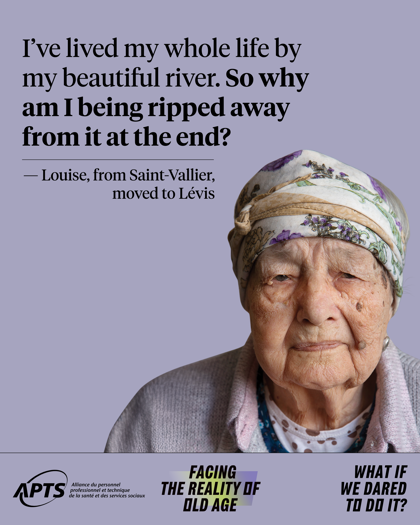
When a place opens up...
When a place finally opens up, seniors are often forced to move on very short notice. The hasty transition means packing in a hurry, sometimes in just a few days. For many, it feels like being uprooted: leaving behind their house or apartment and saying goodbye to their neighbourhood, neighbours and memories.
It can be a source of anxiety, sadness and a deep sense of loss. What should be a reassuring step becomes an unsettling, anxiety-provoking ordeal.
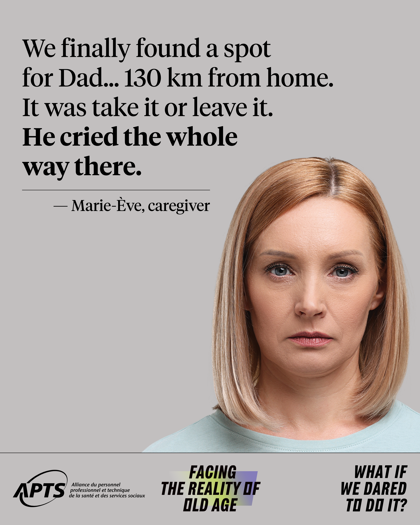
And that’s not the only challenge. If there are no spaces available in their region, people may have to accept a spot in a residence hundreds of kilometres from home.
Suddenly, they find themselves far from their loved ones, familiar surroundings and community. Every family visit becomes a logistical challenge that’s expensive and exhausting, both for the seniors and for their caregivers.
But turning down a placement far from home means dropping to the bottom of the waiting list and risking a steady decline in their condition for months to come.
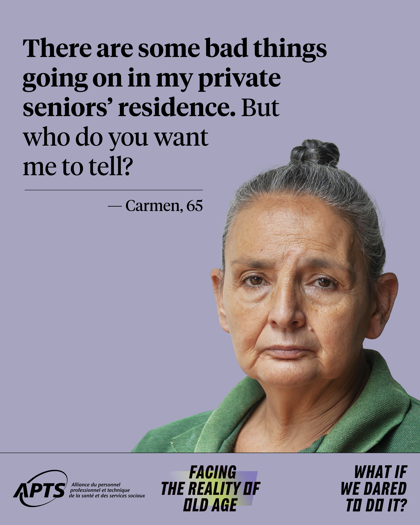
More expensive... but not safer
Favouring private seniors’ residences doesn’t just mean higher costs for families; it also makes it harder to monitor the quality of care and services provided.
Behind closed doors, it’s not uncommon for residents’ needs to be ignored, for care and services to be lacking – or at the very least inadequate – and for promises not to be kept. And those who dare to complain may face reprisals. Despite this, even when mistreatment or substandard practices are reported, the health and social services ministry rarely intervenes. Families often have no choice but to place their trust, sometimes reluctantly, in a system they have no way of monitoring day to day.
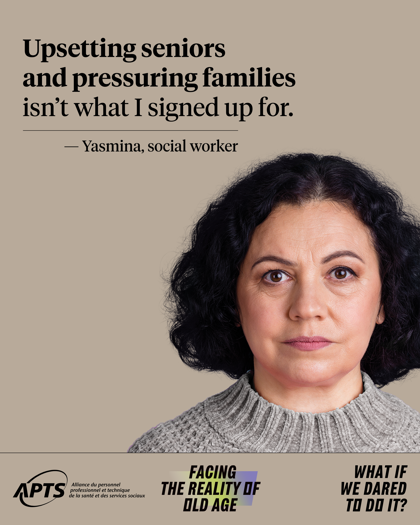
Between a rock and a hard place
For staff who support seniors waiting for a place in a residence, the pressure is immense. They’re often expected to free up beds quickly, while still providing respectful care tailored to a person’s needs. Every decision they make can have a direct impact on the health and well-being of service users. This leads to stress, ethical dilemmas and burnout among workers and compromises the quality of services and the dignity of seniors. The system’s demands weigh on their shoulders and make their jobs increasingly hard to align with their values of care and support.
Break the silence
Have you or someone close to you experienced challenges related to seniors’ residences? Share your story by emailing us at info@aptsq.com and join the conversation on Facebook.
Your stories
THE REALITIES OF HOME SUPPORT
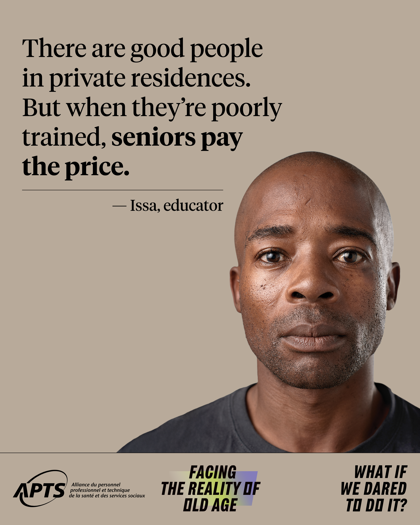
When the private sector enters the home
Did you know that the government heavily subcontracts home care? In 2024, nearly 40% of home support hours for seniors were provided by private contractors.
This growing use of outsourcing is often in response to budget constraints and has a big impact on how services are delivered. For seniors and their loved ones, it means navigating a fragmented system, where continuity and personalized care aren’t guaranteed.
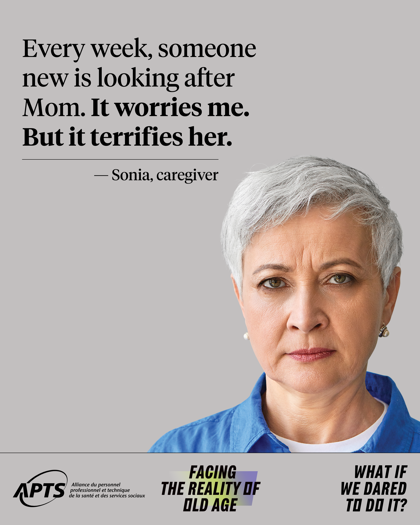
Private agency staff receive much less training and supervision; while public institutions have tended to require between 700 and 1,000 hours of training in home care positions, some private providers ask for as little as 30 hours of training — a difference that directly impacts the quality of care.
On top of more limited training, there’s high employee turnover, which means regular disruptions in care.
For seniors and their families, every new caregiver can generate stress and uncertainty, undermining the vital connection between the person receiving the care and those providing it.
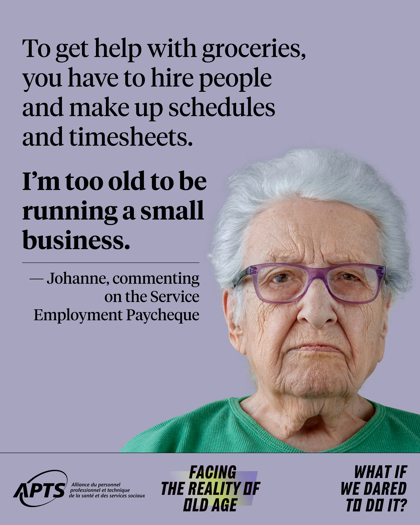
An idea that just doesn’t hold up to scrutiny
The service employment paycheque works a bit like an allowance for private home care services: the government allocates a certain number of support hours for families, who are responsible for hiring and supervising service providers.
This system puts caregivers in the role of manager and employer, with all the responsibilities that entails: scheduling, ensuring continuity of care, vetting care workers’ skills and filling out a mountain of paperwork.
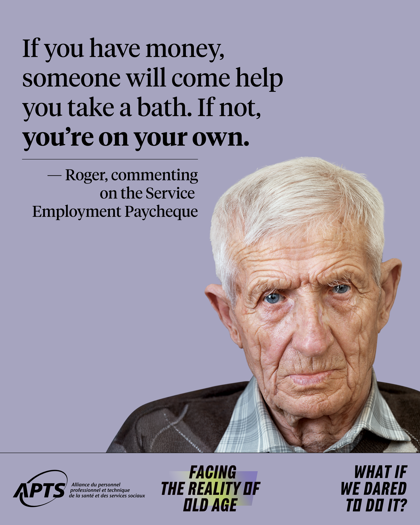
In theory, the service employment paycheque is meant to make home care more accessible. In practice, it often leads to stress and complications for families and seniors.
By putting a price tag on services, it also creates a gap between wealthier families who can top up their allocated hours with extra funds, and those with more limited means, who are stuck with the hours allocated.
The result is fragmented, uneven access to care, far from the promise of universal, fair service for all seniors.
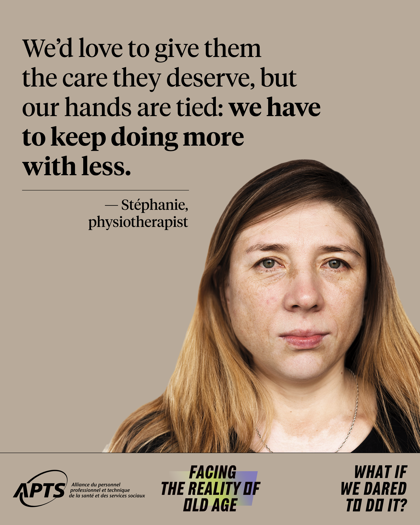
Caught between constraints and convictions
Life isn’t any easier for home care workers. Although they’re specifically trained and hired to assess the service needs for the people they support, they keep coming up against administrative hurdles and their recommendations being challenged for financial reasons. The result is seniors who end up waiting three months for help bathing and care workers who are exhausted and disheartened. To make matters worse, they’re the ones who have to explain to the families why inappropriate decisions were made. This creates tension between the care workers’ values and their practice, sometimes straining their relationships with families.
Break the silence
Have you or someone close to you experienced challenges related to home care? Share your story by emailing us at info@aptsq.com and join the conversation on Facebook.







